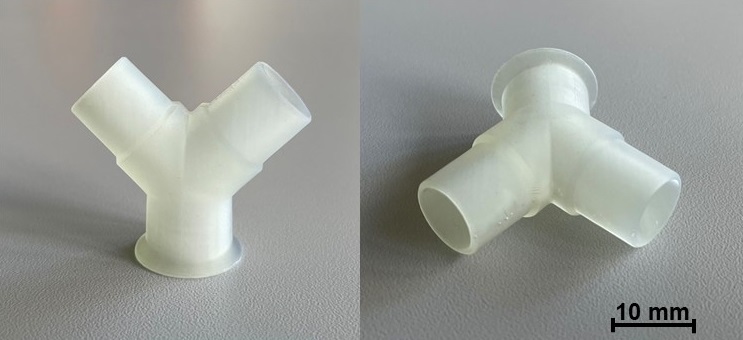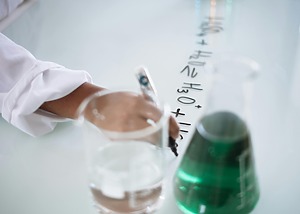From medicine to electronics and optics, new materials developed by scientists at Kaunas University of Technology (KTU) can be applied in various fields where cleanliness, precision, and durability are essential. They stand out not only for their functionality but also for their sustainability: they are made from renewable raw materials, and no solvents are used during production.
“Advanced materials can be not only functional, but also friendly to people and the environment. Such work paves the way for technologies that contribute to a safer and more sustainable everyday life,” says Professor Jolita Ostrauskaitė at the KTU Department of Polymer Chemistry and Technology.
The new invention – polymers developed by KTU researchers – belongs to the class of vitrimers, a relatively new type of polymer discovered only about three decades ago and named vitrimers just 15 years ago. This makes it a rapidly growing research field that is attracting increasing attention from scientists worldwide.
A more environmentally friendly solution
According to Ostrauskaitė, until now most vitrimers were derived from petroleum resources and required catalysts for processing.
“The polymers we have developed are unique because they are made from plant-based compounds, cured under UV or visible light, and do not require catalysts for processing. This happens naturally due to the chemical structure of the material itself,” emphasises the scientist.
This is important not only because it simplifies the technological process but also for sustainability – catalysts are often expensive, derived from non-renewable resources, or even toxic. By eliminating them, material consumption is reduced, no additional additives are needed, and the technology becomes simpler, safer, and more environmentally friendly.
“Vitrimers are thermosetting polymers that, thanks to dynamic covalent bonds, can be thermally reprocessed or reshaped, similar to thermoplastics. At certain temperatures, they can self-heal after damage and also retain a temporary shape that can later be restored – this is known as thermally responsive shape memory,” explains prof. Ostrauskaitė.
These materials were developed and studied by researchers from the Department of Polymer Chemistry and Technology at KTU: KTU PhD student Viltė Šereikaitė, Dr. Aukse Navaruckienė, and Dr. Sigita Grauželienė.
Polymers with such properties are considered smart materials, opening new possibilities for advanced high-tech applications.
KTU scientist notes that the most significant scientific achievement was combining, in a single material, plant-based origin, radiation-induced polymerisation, self-repairing ability, shape memory, antimicrobial effect, and suitability for optical 3D printing.
“Such multifunctional and sustainable solutions are still very rare, making this an important step forward both scientifically and industrially,” says KTU researcher.
Tested in 3D printing and medicine
One of the most notable achievements by KTU researchers is the polymers’ suitability for optical 3D printing, which can be performed at room temperature, consumes less energy, and generates less waste. When exposed to UV or visible light, these polymers can be printed in complex shapes, such as medical device connectors.



